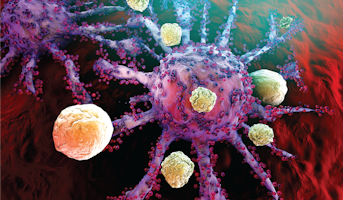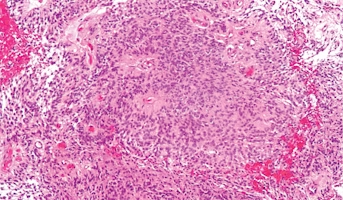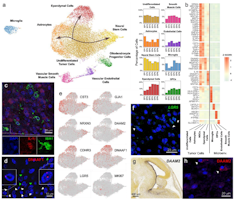Molecular Analysis of the Cellular Ecosystem of Childhood Ependymoma
Email Principal Investigator
About this
Project
For pediatric brain cancer patients younger than 3 years old, ependymomas are one of the most common forms of central nervous system growth. With no effective chemotherapy currently available to treat ependymomas, there is a less than 55% 5-year survival rate in young patients. Researchers are seeking to build up the knowledge base around ependymomas and the mechanisms of their growth using RNA sequencing available through the Pediatric Brain Tumor Atlas. Greater understanding of ependymoma growth will guide the therapeutic decisions of medical professionals.
Ask The
Scientists
What are the goals of this project?
Researchers are pursuing a deeper understanding of ependymoma growth and identifying possible targets for immunotherapy.
What is the impact of this project?
Ependymoma presents a huge challenge in finding effective treatment options. This project will provide comprehensive information necessary to find new therapies.
Why is the CBTN request important to this project?
Accessing the Pediatric Brain Tumor Atlas, researchers will be able to further explore and validate preliminary results of this large study.
Specimen Data
The Children's Brain Tumor Network contributed to this project by providing access to the Pediatric Brain Tumor Atlas.
Meet The
Team
Dr. Wu (snRNA-seq) and Dr. Nasrallah (histopathology) at the University of Pennsylvania, and Dr. Santi (histopathology) at the Children´s Hospital of Philadelphia
Institutions

University of Pennsylvania

Primary
Operations Center

Children’s Hospital of Philadelphia
Joined onOperations Center for the Children’s Brain Tumor Tissue Consortium, the Children’s Hospital of Philadelphia (CHOP) is currently ranked 1st nationally for their Pediatric Cancer Program by U.S. News & World Report. CHOP’s Biobank is home to the CBTTC’s pediatric brain and CNS tumor biorepository; the
related
Resources
Project

Specimen
Ongoing
Cell Ecosystem and Signaling Pathways of Primary and Metastatic Pediatric Posterior Fossa Ependymoma
Ependymomas constitute nearly one third of the central nervous system neoplasms among children aged < 3 years1. The disease remains a significant therapeutic challenge, with a 5-year overall survival rate < 55 % among this age group2 and no available chemotherapy of proven efficacy. The breadth of t
Ependymoma

Pablo G. Cámara
Publication





